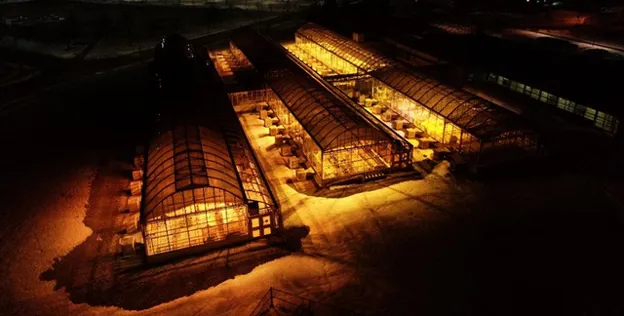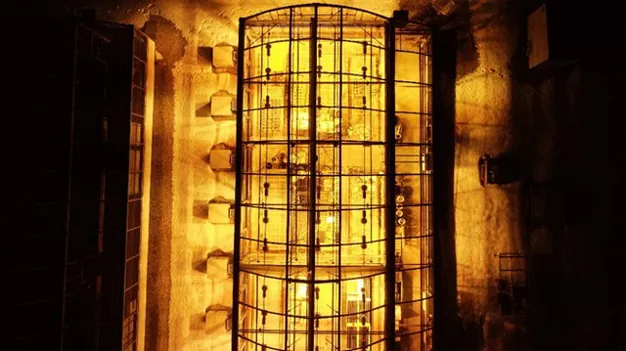“There is a lot of data on lighting inside the greenhouse and what plants need, but there isn’t much data available on the light pollution side of it. We don’t actually know the light levels coming out of greenhouses,” explains Dr. William David Lubitz, associate professor at the Canadian University of Guelph.
Better understand light emissions
William is one of many researchers working on an OMAFRA-funded project, with support from OGVG. The project’s mission is to better understand the light emissions from greenhouses and how the recently enacted light abatement bylaws will impact growers. To do so, the research team has developed a methodology whereby a drone was equipped with a color camera and light intensity meter then flown over several greenhouses at night during the winter months when supplemental lighting is used.
“Our set-up had a wide range of sensitivity from daylight brightness levels to nearly pitch black. We took measurements with light abatement or energy curtains fully open, partially open, or completely closed since gapping allows growers to maintain ventilation while cutting light emissions,” says William.
During the 2020-2021 lighting season, measurements were taken over a range of greenhouse types, so to speak, including glass and plastic ranges, HPS or LED, etc. While this allowed the researchers to take a detailed snapshot of greenhouse light emissions, William also notes that the project’s main limitation comes back to people themselves and how they perceive light. With the human eye capable of adapting to very bright and very dark conditions, it is conceivable that even with slight gapping for ventilation and climate control, residents may perceive resultant stray light differently.

University of Guelph research greenhouse, photographed by Benjamin Snow
Different colors might be perceived differently
“It used to be that most lit greenhouses were HPS, so the color emitted was all similar. But now, with LEDs, we’re seeing different colors of emissions that residents might perceive differently. Yellow light from HPS may not be perceived the same way as pink light from LEDs, even at the same intensity. And just overall, people have unique sensitivities to light,” William explains.
As the first year of study focused on light emissions at the greenhouse itself, the second year of data collection will also look into sky brightness and color to consider the impact of light pollution at a distance from greenhouses. These measurements will certainly depend on the greenhouse and ambient weather conditions. The next measurement season is also slated to include non-horticultural greenhouse operations such as floriculture and cannabis.
Moreover, this upcoming year will include crop trials aimed at determining the impact of light abatement curtains on the management of the crop and its microclimate, particularly the temperature and humidity.
As William emphasizes, none of this research would be possible without the support of growers who have not only allowed the imaging above their operations but were often on-site in the middle of the night to operate the curtains and cycle the lights for the researchers.
“In the absence of data, we can only do our best, but it is difficult to do that well,” says Dr. Lubitz, in reference to the strict light abatement bylaws enacted in Kingsville and Leamington in 2020.

University of Guelph research greenhouse, photographed by Benjamin Snow
In the " Lighting and Abatement Strategies " segment, Dr. William David Lubitz will present a project update at the Canadian Greenhouse Conference on Wednesday, October 6th, in the “Lighting and Abatement Strategies” segment. For more information and to register, click here.
Ahead of the conference and any diffusion of project results, William wants people to understand how challenging light-related research is and that it isn’t as simple as taking one measurement with a meter.
“It is really difficult to take a consistent measure of the amount of light coming from a greenhouse. Yes, you can hold up a meter and get a number, but you can’t just compare that to other situations nor relate it back to what people see. This project aims to provide everybody with this information,” says William.

For more information:
William David Lubitz
Associate professor
University of Guelph
[email protected]
Canadian Greenhouse Conference
https://www.canadiangreenhouseconference.com/
